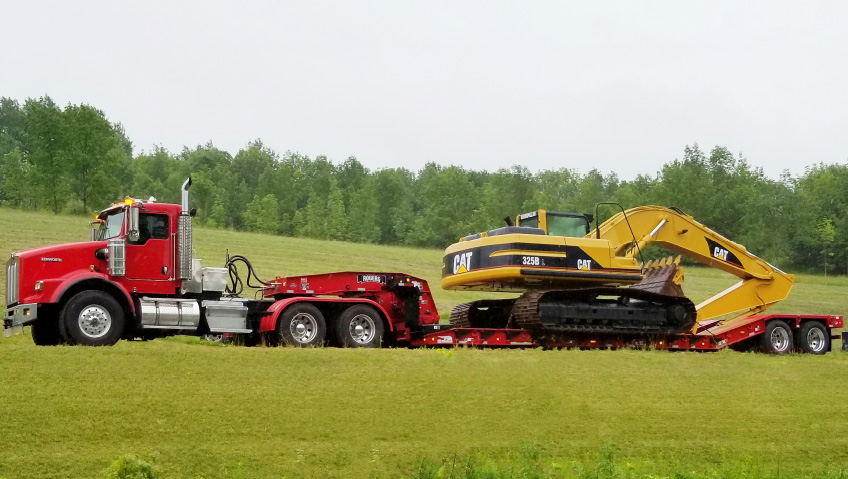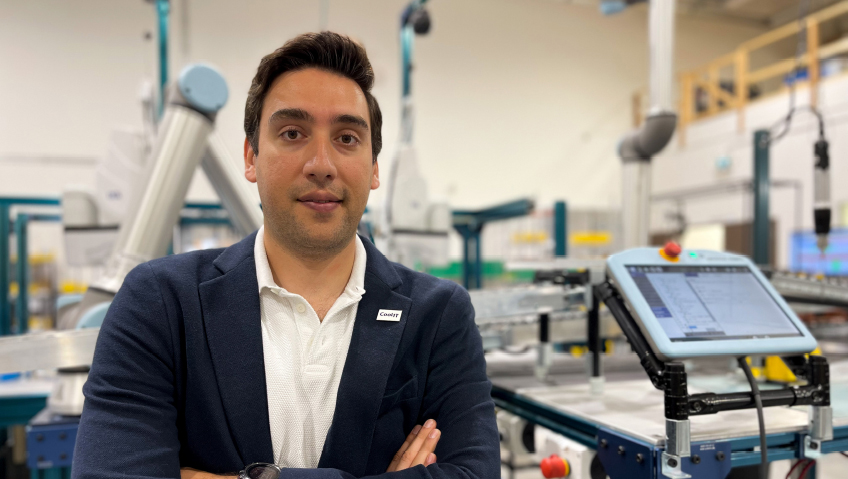The International Safety Equipment Association (ISEA) represents companies that make the workplace safer. Due to COVID, the association’s mission has taken on a new urgency. When the pandemic began, ISEA worked with its members and the federal government to replenish depleted supplies of crucial protective equipment that would mitigate the spread of the virus.
Based in Arlington, Virginia, “ISEA is the trade association for companies that design, test, manufacture, and supply a wide range of personal protective equipment and personal safety equipment,” explains Senior Director of Policy Dan Glucksman.
Personal protective equipment (PPE) consists of items worn on the body such as safety glasses, hard hats, and high-visibility vests. COVID-related PPE gear includes protective garments, masks, respirators, and face shields. The personal safety equipment category covers emergency eyewash stations, shower units to wash off chemicals and contaminants, hand-held gas detectors, and the like.
ISEA has roughly eighty member companies, most of them equipment manufacturers or distributors. Members range from corporate giants like Honeywell and 3M to “small businesses and family-owned operations,” says Glucksman.
As a trade association, ISEA performs advocacy, public education, training, and writing industry standards. The association works closely with business groups, legislators, regulators, and industry standards organizations. Some of its most high-profile activity in recent years has involved the Strategic National Stockpile (SNS).
Established in the late 1990s, the Strategic National Stockpile “is a secret network of warehouses scattered across the country, each one the size of several Walmart Supercenters,” noted a November 23, 2020 article on the NPR website.
These facilities maintain medicines, medical devices, and personal protective equipment that might be in high demand during “a manmade or natural public health emergency,” says Glucksman.
A man-made emergency might entail the release of biological weapons by a terrorist group or a toxic chemical leak. Natural health emergencies include disease pandemics.
When the H1N1 virus struck in 2009, the SNS proved its worth by distributing over 85 million N95 respirators. Due to budget shortfalls and supply chain issues, however, SNS’s full inventory of N95 masks was not replenished—a situation that alarmed ISEA.
“We had mentioned to the leaders of the SNS over the years, ‘Hey, you ought to restock those respirators you gave out,’” recalls Glucksman.
This did not happen, however, and when COVID was declared a pandemic in March 2020, federal officials sheepishly admitted the SNS only contained a limited supply of respirators. Many of these respirators were either outdated or “beyond their stated shelf life,” he adds.
Hospitals were experiencing a surge of patients, and high-quality respirators were needed to prevent healthcare staff and others from getting sick. Federal authorities decided to restock the SNS as quickly as possible. SNS leaders approached ISEA and asked for help. Could association members pitch in and rapidly provide vast numbers of surgical masks and N95 respirators? Companies rose to the challenge.
“ISEA members did provide the surgical N95s, regular N95s, and some of the surgical masks, and those products were supplied to the SNS over the course of fifteen to sixteen months,” states Glucksman proudly.
With COVID still lingering, SNS officials have been working closely with ISEA staff to maintain large stocks of protective gear. The association has also been advocating for something called vendor-managed inventory. Under such a system, a manufacturer contracted by SNS to make protective equipment would arrange for a certain amount of finished product to be set aside and warehoused. Doing so would ensure a ready supply of protective and safety equipment, for when a virus will strike in the future.
Similarly, ISEA strongly supports stable funding for two federal initiatives: the Hospital Preparedness Program, designed to help hospitals cope with increased numbers of patients following emergencies and disasters, and Public Health Emergency Preparedness grants.
Over the years, the association has forged strong ties with the Occupational Safety and Health Administration (OSHA). The two organizations signed an alliance in June 2018, to collectively disseminate information about selecting, using, maintaining, and storing personal safety and protective gear.
This year, ISEA will be assisting with an OSHA initiative aimed at raising awareness of the dangers of falling objects on worksites. The association is also involved with OSHA’s heat illness prevention campaign which emphasizes the risk of excessive heat for workers in certain sectors.
Association members will be “sharing information about various products on the market to reduce heat stress,” Glucksman says.
ISEA was founded on July 31, 1933, at the height of the Depression. The association’s original purpose was to “control and set prices for PPE, to try to help the recovery from the Great Depression,” Glucksman says.
This mission eventually expanded, to include industry advocacy and other duties. Since the 1960s, the association has also helped write industry safety standards. ISEA today is an accredited Standards Developing Organization (SDO) with the American National Standards Institute (ANSI) which sets voluntary standards for products, systems, processes, and workplace equipment. Standards are updated to accommodate new developments.
ISEA works with groups made up of representatives from industry, end-user companies, academia, and other organizations. Research is conducted, discussion is had, and the product group produces a draft standard. The draft is subjected to review and public input. If deemed acceptable, the draft will eventually become an American National Standard.
Through this comprehensive, painstaking approach, the association has helped develop a wide range of ANSI standards. ANSI/ISEA 121-2018, for example, is the American National Standard for Dropped Object Prevention Solutions, and this standard will be a focus of OSHA’s campaign on the dangers of falling objects at work. ANSI/ISEA Z87.1-2020 is the American National Standard for Occupational and Educational Eye and Face Protection Devices.
The association has most recently updated ANSI/ISEA Z308.1-2021, the American National Standard—Minimum Requirements for Workplace First Aid Kits and Supplies. This standard is the benchmark for businesses required to maintain in-house first aid kits.
ISEA sits on ANSI committees covering everything from welding safety, to fall protection equipment, safety signs and colors, hearing protection, and eye and face protection. The association also has a presence on committees and sub-committees dedicated to head and respiratory protection, protective clothing, and other areas, for the International Organization for Standardization (ISO), which sets global standards. It provides input for ASTM (formerly, the American Society for Testing and Materials) and the Canadian Standards Association (CSA) as well.
The association runs a training initiative for manufacturer and distributor sales and marketing staff members. The intensive, week-long Qualified Safety Sales Professional Program (QSSP) aims to educate people who sell safety equipment about common workplace hazards and ways to protect workers from those hazards. OSHA general industry regulations are outlined in detail. Companies looking to purchase safety gear can count on qualified sales representatives to have a broad knowledge of the field.
Graduates become “a partner in safety, after passing the QSSP course, rather than a peddler of safety,” states Director Marketing & External Affairs Nicole Randall.
As for the future, expect a growing emphasis on telemetry within the protective equipment sector, says Glucksman. Telemetry is the science of monitoring and transmitting data and measurements via advanced tools. Someone working in a sewer, for example, could be fitted with sensors. Data collected by the sensors would be relayed to an office or an on-site manager. The worker(s) and on-site and office staff remotely monitoring their progress can be instantly alerted if the sensors note diminishing oxygen levels or other dangerous conditions.
He thinks the public and government agencies have become more aware of the need for protective equipment in general. The COVID pandemic drove home the importance of maintaining a robust federal stockpile, a message that has filtered down to state and local levels as well. “I think states will have their own stockpiles and not rely on the federal government. I think that awareness and planning might even go down to localities and regions,” he says of the future.
COVID also raised awareness of the vulnerability of U.S. manufacturing supply chains. Relying on overseas manufacturers to make protective equipment during global public health emergencies is not ideal. ISEA is involved in federal and White House committees looking at PPE supply issues.
“There is an increased focus by the federal government and some states about production in the United States… in respiratory protection, there is robust manufacturing of N95 respirators,” Glucksman says.
“COVID put a focus on preparedness in general, especially within the U.S. government. They want to make sure we never go through an episode, [where there is] a shortage of what we need. To that end, they have made it a point to form a closer bond with ISEA and its members. Dan often hosts meetings with White House staff and ISEA members to discuss what’s going on with the COVID response and make sure [a PPE shortage] never happens again. They are looking to ISEA members to help them do that, to use their expertise as manufacturers of the equipment,” adds Randall.






